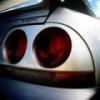R34 Gtr Garrett -5 Turbo Lag, Need Advise
Announcements
-
Similar Content
-
Latest Posts
-
I just bent the ends of my premo plates. It even went through Regency like that after the engine conversion and the inspector (a great bloke!) just squinted his eyes and said "I didn't see that". Plates, and how they look, are just something that have zero importance to me.
-
Yeah, I would have said the same. It makes me suggest that there are other things wrong, such that the ECU is totally unhappy with the broken sensor. The only other thought here is that maybe it is shorted, which might cause a different issue to the typical "disconnected" sensor.
-
The fact that US/JDM plates actually fit the skyline bumpers properly is a big, big thing for me as they are the correct dimensions. Annoyingly you can't opt for a normal plate (or plate combination) in that size. You have to make up your own one, and at that point you'd still know it wasn't randomly assigned.
-
Well, really, that's any ECU, because it's not so much the ECU that the tuner connects to, but a laptop that's connected to the ECU. You have to have the tuning software installed locally. The "remote" part is essentially just remote desktop (RDP) or VNC type access. Nevertheless, if you're looking to upgrade, then you're immediately in the Haltech/Link territory, both of which can be done by any number of competent tuners here in Oz. But without a dyno, you'll definitely also need a wideband O2 sensor fitted, and you'll probably be relying on "auto" tuning a bit, where you drive it around under various loads and then apply the corrections that the ECU learns (basically applying the fuel trims that the ECU has to do to correct the mixtures). Tuning the timing is a little harder. It can be difficult to trust the old OEM knock sensors on RBs, so it is definitely best to have someone who knows what they're listening for, with knock ears (a piezo microphone connected to the engine, and and little amp and headphones so the listener can hear the angry men with hammers who live in the engine). That is more difficult to do remotely, and I suspect the only sane way is to be quite conservative on timing. But that's OK. You're probably waaaaay better off with conservative timing where you are. What is the fuel situation? 98RON available? Or low grade jungle juice?
-
By hoodedreeper · Posted
I see your point, I didn't think too deep into it, was purely focused on the price. There's no bad blood between myself and GSM, they acknowledged the price was cheaper else where and at the time couldn't match it.
-






Recommended Posts
Create an account or sign in to comment
You need to be a member in order to leave a comment
Create an account
Sign up for a new account in our community. It's easy!
Register a new accountSign in
Already have an account? Sign in here.
Sign In Now